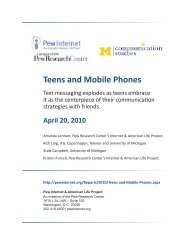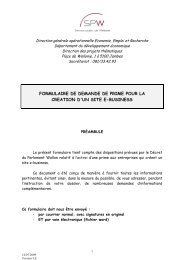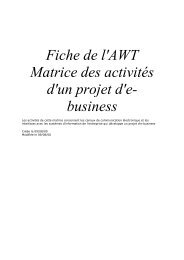Create successful ePaper yourself
Turn your PDF publications into a flip-book with our unique Google optimized e-Paper software.
In the European Union there are explicit rules (the State Aid Rules) which define<br />
and seek to limit the circumstances in which public money can support fibre<br />
projects. The underlying goal is to restrict public finance to those areas where the<br />
private sector will not build or operate unaided. Despite this, public investment in<br />
wealthy urban areas is still allowable under the rules but with certain caveats,<br />
principally that the public sector investor must earn a commercial rate of return<br />
even if the period of time is perhaps longer than a bank or similar private investor<br />
would accept for projects of this type. However, in such a case the rules also<br />
require that the State is a minority provider of finance – probably <strong>be</strong>st achieved by<br />
using a structure such as a PPP (public private partnership).<br />
PPPs developed as a way for the private sector to fund capital projects in return<br />
for a guaranteed future revenue stream from government. In essence public debt<br />
is replaced with private debt that will make a more or less guaranteed return over<br />
several years. In build and operate PPPs, the contract may <strong>be</strong> tied to the<br />
construction and also possibly operation of a major capital asset. The original idea<br />
was that the private sector would <strong>be</strong> <strong>be</strong>tter at building on time and to budget than<br />
the public sector and would have a clear profit incentive to do so. Hospitals,<br />
bridges and many other such projects have <strong>be</strong>en funded using PPPs.<br />
As the examples suggest there are many different configurations of PPPs and there<br />
is no single solution – each deal is structured and negotiated on its merits.<br />
However, the basic feature is that the State has to guarantee future revenue. It is<br />
that future income stream which enables the private sector to fund the<br />
construction, and possibly operation, of the project.<br />
In <strong>FTTH</strong> projects a common approach is to define an “availability payment”, which<br />
is money paid regularly to the project when it has <strong>be</strong>en built and put into service.<br />
If revenue from customers grows, the availability payment is reduced using a predefined<br />
formula. An agreement may even provide a reverse payment or revenue<br />
share to the public sector sponsor if the project is more successful than expected.<br />
The advantage for the public sector is that cost of the project is funded out of<br />
future budgets rather than current capital budgets. The cost is the premium for<br />
risk and the required return that is given to private sector financiers funding the<br />
construction. PPPs also tend to <strong>be</strong> complicated to set-up and administer and this<br />
can make them costly.<br />
58 www.ftthcouncil.eu

















